I am a sucker for a swung vase. Color, maker, size, fingers, no fingers, wide asymmetrical mouth, more petite, petal-shaped mouth, short, tall, fat, skinny…I love ‘em all. No two are exactly the same; they are each gloriously perfect in their imperfection.
The distinctive design of the swung vase, most popular in the 1960s through the early 1980s, came from a unique glass-blowing technique. The often vibrantly colored, uniquely fashioned glassware has an irregularly shaped mouth, freeform shape, and a cool Mid-Century Modern vibe, resulting from how it is “swung” when removed from heat. Swung glass is often mistakenly called “swing glass.” However, because the resulting vase has already been “swung,” they are correctly referred to in the past tense.
How a Swung Glass Vase is Made
The technique of producing swung glass seems complicated, but it is relatively straightforward. The molten glass is pressed into a mold and allowed to cool slightly. While the glass is still hot but has conformed to the shape of the mold, the glassblower picks the vase up by the neck or the bottom and swings it. During this process, the glass stretches and twists. After the vase has been swung, the glassblower cuts off the tail and shapes the mouth of the vase or leaves it as is. The outcome is a vase featuring barely-there ruffles to dramatically sloped mouths. Once it cools completely, it is polished.
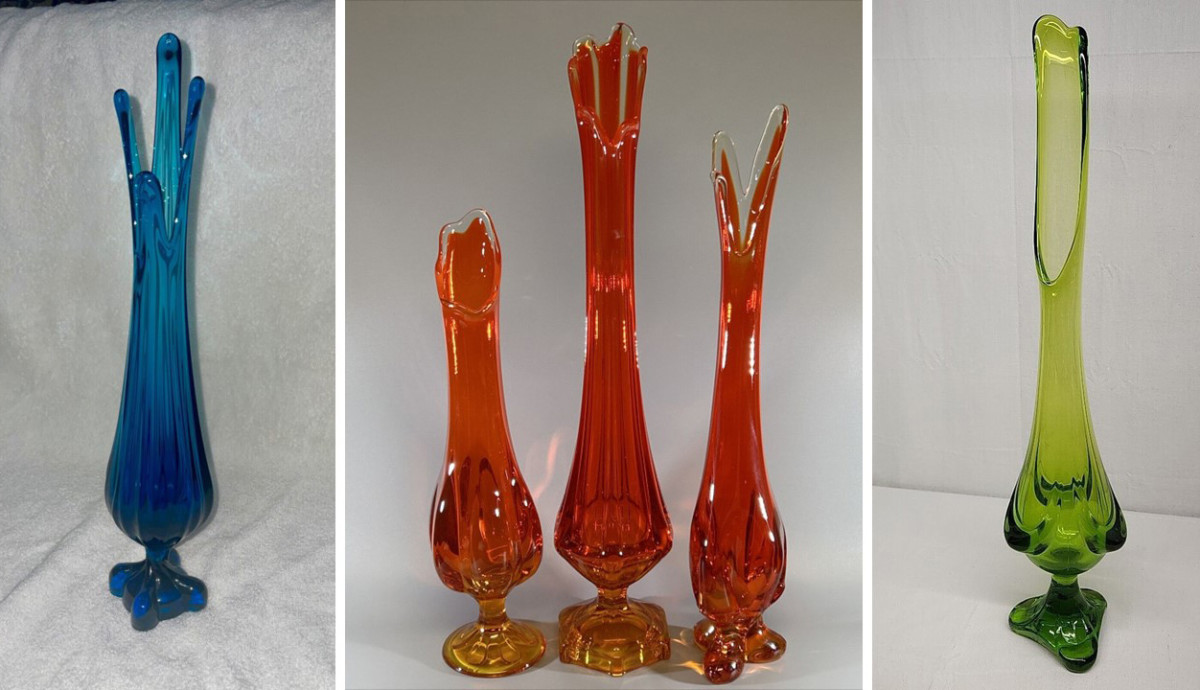
Because of the random results of this process, no two pieces are identical to each other. However, particular styles of vases are similar enough to fit into a nomenclature of classifications created by collectors rather than the companies themselves. Smoothies, hobnail, ribbed, fat butt, diamond butt, footed, toed, broken column, pedestal, nubby, wide mouth—the list goes on. Individual vases can fall into more than one of these categories.
Below, you can watch glass artist Jason Antol create a small swung vase.
Popular Swung Glass Producers
Swung vases, in the modern sense, didn’t become popular until the 1960s. However, the first precursor to those vases was produced in 1889 by the J.B. Higbee (Bryce Higbee) Glass Company. Also known as “glass stretch” vases, they bear only a slight resemblance to the styles of mid-century swung vases made popular by companies such as L.E. Smith and Viking. Fenton, Imperial, and Northwood produced carnival glass swung vases with rounded petal openings, more closely resembling the style of the early Higbee vases.
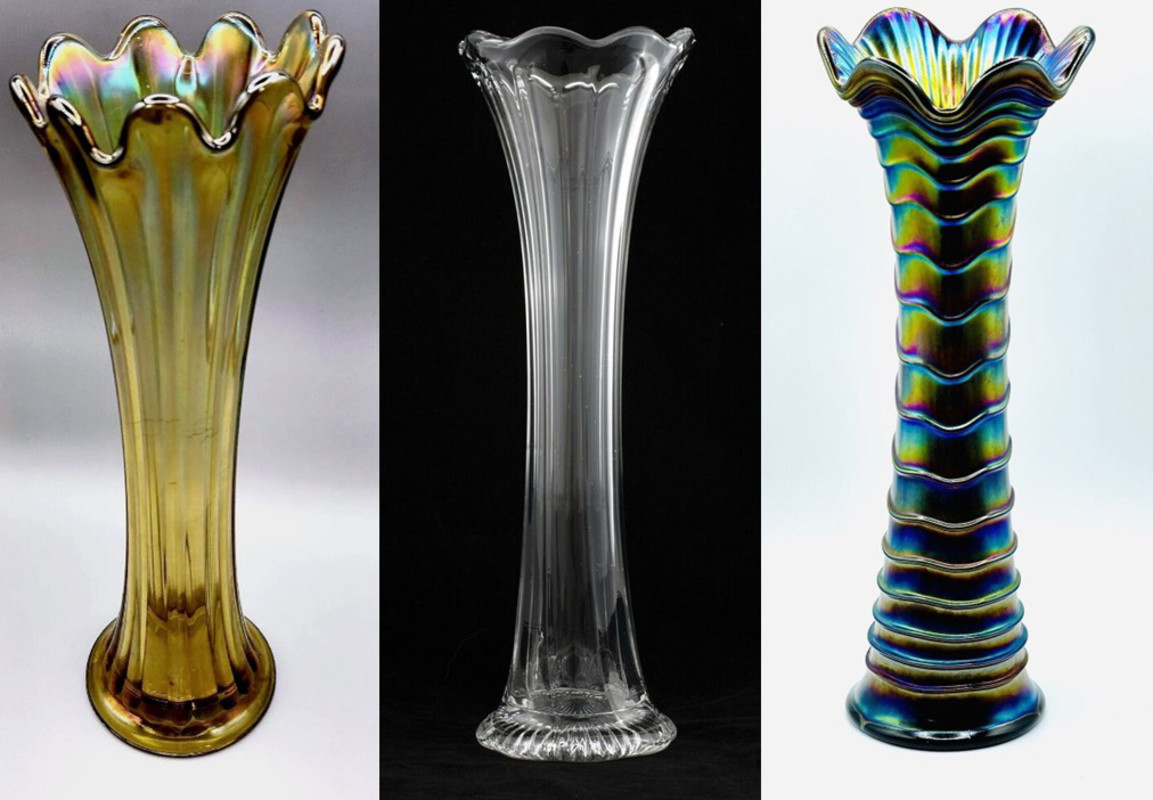
The most prolific producers of the coveted asymmetrical drape mouth vases were Viking Glass Company (1944-1987), L.E. Smith (1907-2004), and, on a slightly lesser scale, Fenton Art Glass Company (1905-2011).
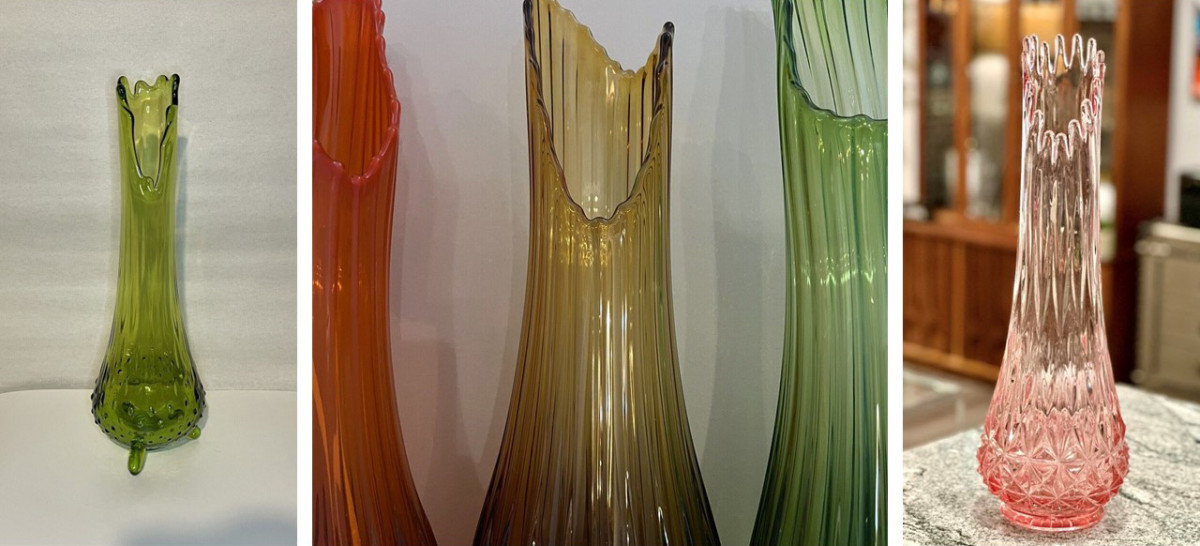
Some, but not all, of these vases glow when exposed to black light. Uranium dioxide is the compound that gives Uranium/Vaseline glass its greenish-yellow glow under a black light. Fenton produced Vaseline glass swung vases at the height of uranium glass popularity. Other companies, such as L.E. Smith and Viking, produced deep orange or flame-red vases with glowing bases and mouths. They contain cadmium sulfide. This cadmium glass is also known as selenium-ruby glass. Other vintage pieces can contain Manganese, also referred to as Egyptian or Alexandrite glass. Depending on the manganese content, these vases can give off a pinkish, purplish, blue, or green glow.
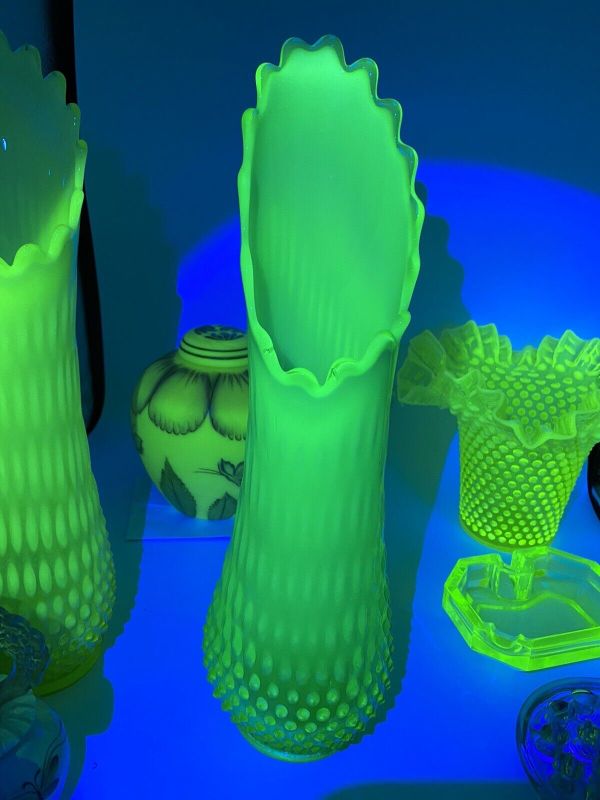
How to Identify Vintage Swung Vases
Vintage swung glass was primarily made in America, although similarly made Murano and Japanese vintage vases can be found. Many countries are making swung vases today—intentionally reproducing the colors and styles of vintage American glass. Most modern glass features stamped or branded marks. Vintage vases do not. Instead, American companies used an aluminum or paper tag to identify their work.
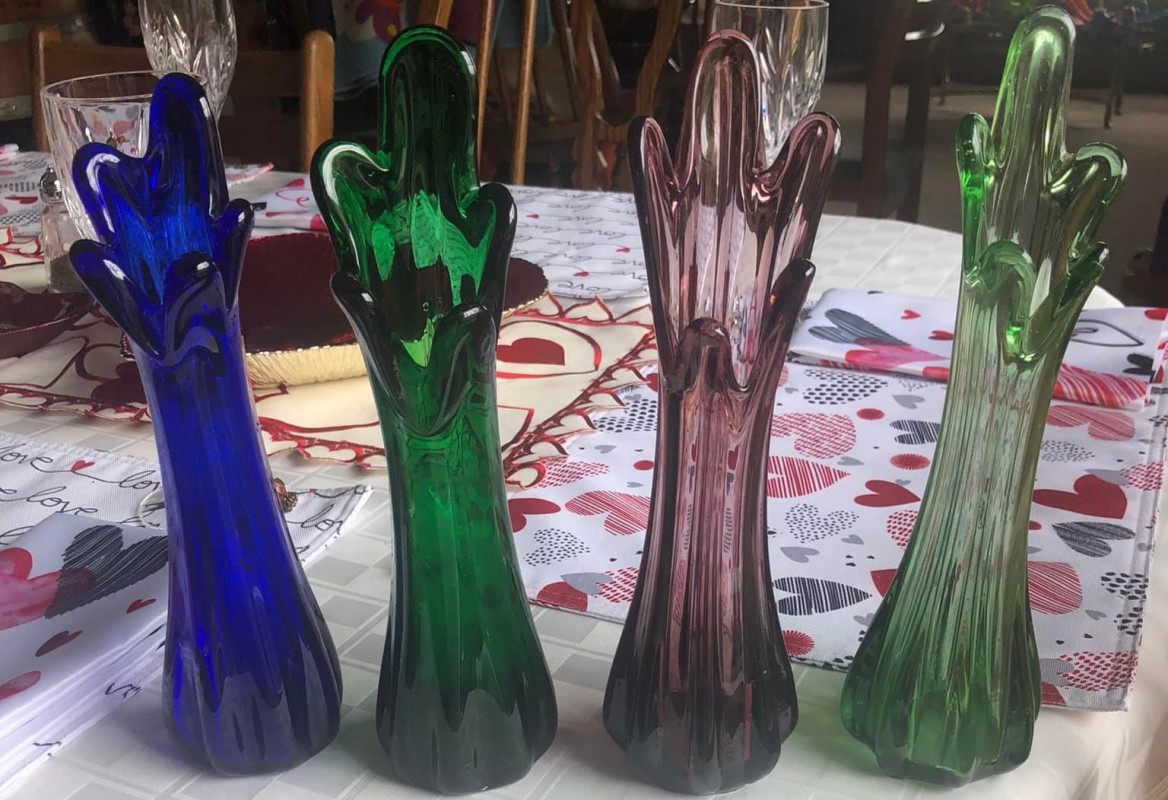
One of the most reliable ways of identifying your vintage American swung vase is to look for the mold seam at the bottom of the vase. The seam begins to fade away toward the elongated neck. Visible tool marks or flat places on the mouth of the vase or pedestal/footed base are a dead giveaway for a pulled or modern vase. These characteristics don’t necessarily make a vase valueless—many modern art glass vases are tool-shaped. But these traits do disqualify them from swung vase identification. I’ve highlighted a few books above that can assist you with identifying your nearly one-of-a-kind piece(s), and there are countless groups on social media dedicated to these gracefully curved beauties.
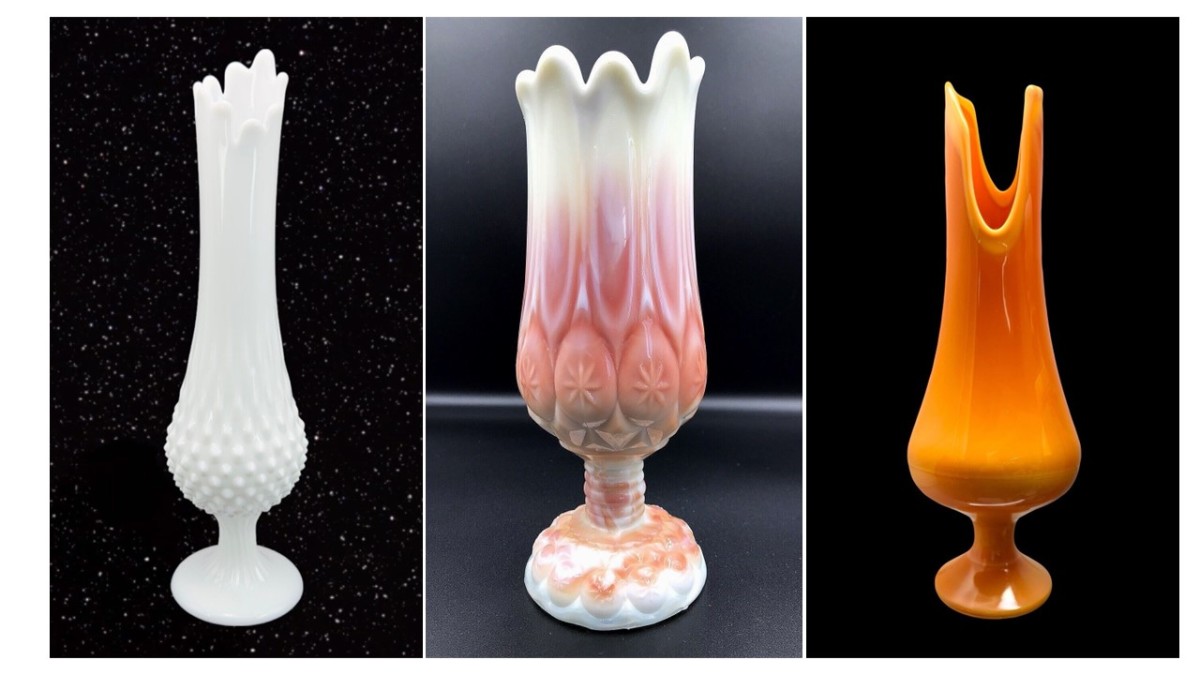
Image scourtesy Kele Johnson
Where Can I Find Swung Vases Without Breaking the Bank?
While the cost of collecting this beautiful glass has sharply risen within the last several years, you can still find reasonably priced smaller swung vases unless you have dedicated all to chasing those elusive 40” floor vases. When on the hunt, I tend to avoid antique stores, but antique malls with individually owned booths can be worth your time. Finding great deals on eBay and at estate sales is also possible. I’ve even picked up a few on Facebook Marketplace and at garage sales.
Swung vases are near and dear to those of us who prize them for their mid-century modern vibe. The most popular swung vases embrace the asymmetry characterized by the era. But you don’t have to love all things MCM to hoard (er…I mean collect) this beautifully elegant glass. Who doesn’t enjoy a shelf of sparkly, quirky glass? I know I do.
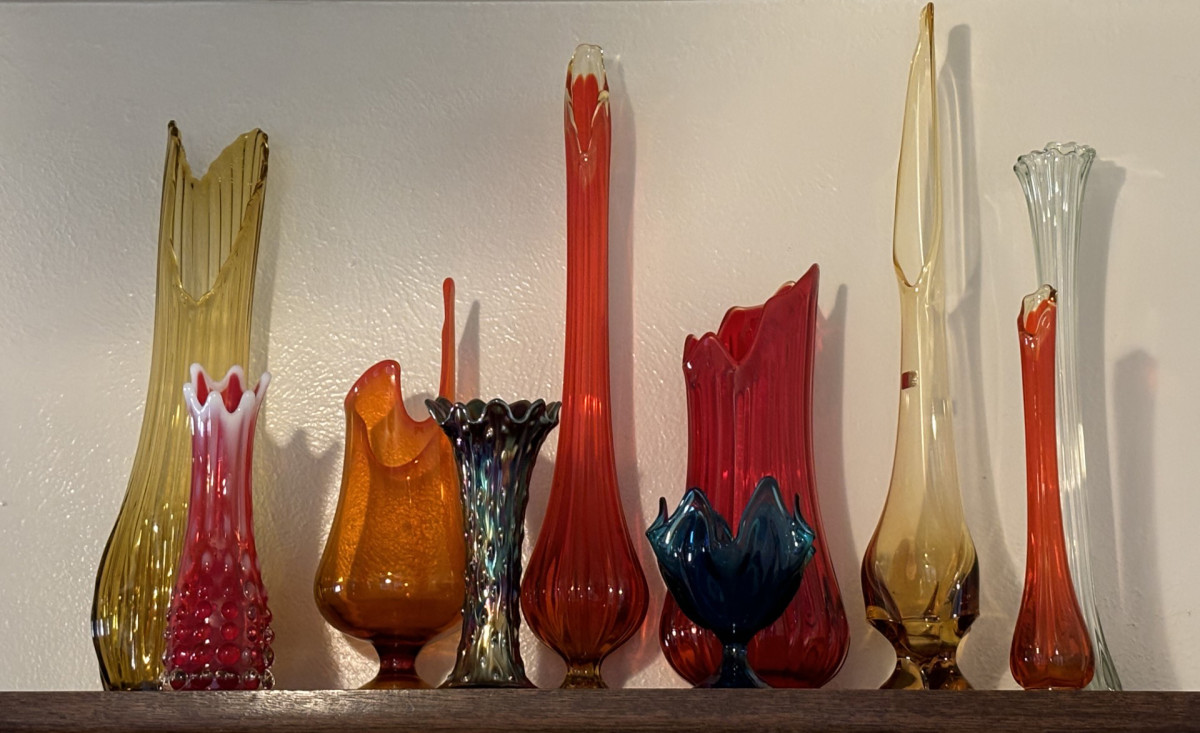
Kele Johnson
You May Also Like:
Carnival glass values depend on many factors
What’s Hot In Antique & Decorative Arts








